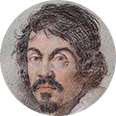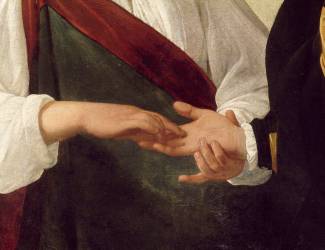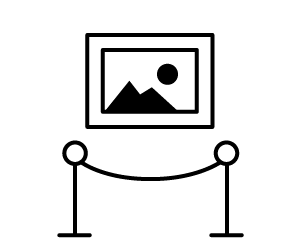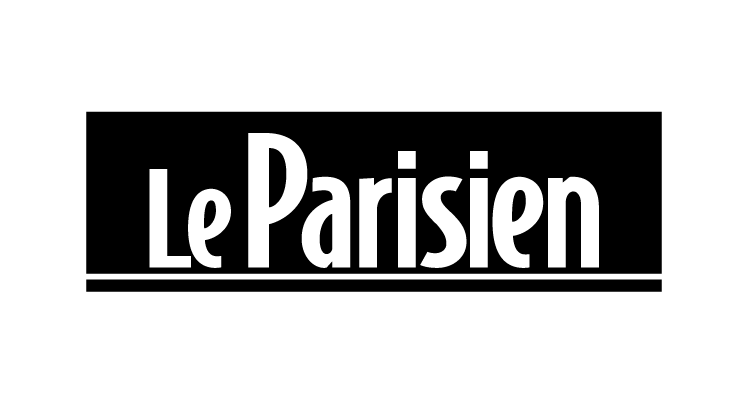Artwork of Caravaggio canvas prints & artprints
An impetuous painter of the late 16th and early 17th centuries, Caravaggio brought the art of chiaroscuro to its firmament, inspiring many artists during his lifetime, but also after his death.
Discover the work of the master of light and shadow, with his oil on canvas "The Death of the Virgin" (1605), one of his best-known canvases that was refused by the clergy, his painting "Saint John the Baptist in the Desert" (1604), one of his first commissions for the notable Ottavio Costa, his painting "The Sick Young Bacchus" (1593), a work from the end of his apprenticeship, or "The Seven Works of Mercy" (1607), a canvas of sacred art painted in Naples during the painter's exile following his legal setbacks.
Offer yourself a reproduction available in the catalogue of Caravaggio, one of the greatest masters of his time, and discover his portrait with his biography.
Biography of Caravaggio
The beginnings of Caravaggio : An apprenticeship with Simone Peterzano
Michelangelo Merisi da Caravaggio, better known as Caravaggio, was born in Milan in 1571 into a family of craftsmen working in construction, whose work was appreciated by the Milanese nobility. At an early age, in 1576, the Merisi family was hit by the plague that was ravaging the Lombard capital. Michelangelo's grandfather, father and younger brother did not survive, and the survivors had to take refuge in Caravaggio, the family's home town.
In 1584, aged 13, the future painter returned to the Lombard capital. Already a city of the arts at this time in the late 16th century, Michelangelo was quickly drawn to painting and the works of art around him. With his mother's approval, he joined the studio of Simone Peterzano, an artist close to the Catholic Counter-Reformation movement, and probably himself a pupil of Titian, one of the greatest portraitists of the Venetian school.
It was with Simone Peterzano that the man who began to be known as Caravaggio learnt the art of oil painting and of light and shadow, producing his first paintings and drawing inspiration from the great artists of the day such as Giovanni Savoldo, Lorenzo Lotto and even Titian and Leonardo da Vinci.
A little-documented period in his life, the end of his training probably came around 1588 or 1589, the year his mother died and he moved to Caravaggio. The young Milanese painter then became independent and left in 1592 to try his luck in Rome, a major city for a career in art in Europe.
Caravaggio's first successes in Rome
Having left Milan and arrived in the Italian capital, Caravaggio began to paint his first pictures intended for sale. At this time he perfected his genre scenes, such as his "Boy with a Basket of Fruit" (1593), or "Boy Bitten by a Lizard" (1592-1593). It was also at this time that he made friends with other young artists of the day, such as the architect Onorio Longhi and the painter Giuseppe Cesari, a renowned artist for whom he worked in his studio. It was through his contact with Cesari that Caravaggio learned the tricks of the trade that would enable him to gain a foothold with art collectors and the nobility, who were keen to secure the services of artists of all kinds.
Hence his first successes, with canvases based on mythological images such as "Le petit Bacchus Malade" (1593-1594) and "Bacchus"(1598), many copies of which have since been found. Caravaggio thus gave birth to a style appreciated by the Roman aristocracy, taking ancient figures as his subjects and developing the chiaroscuro technique in each portrait.
His fame then reached the ears of Cardinal Del Monte, notably with the painting "The Fortune Teller" (1595), a secular genre scene that nonetheless enchanted the diplomat close to the pope. Now a protector of the young painter, Del Monte recommended him to Cardinal Contarelli around 1599 for a three-panel fresco on the life of Saint Matthew, to be painted in the Contarelli Chapel in the church of Saint-Louis-des-Français in Rome. "The Vocation of Saint Matthew", "Saint Matthew and the Angel" and "The Martyrdom of Saint Matthew" will have an exceptional response from all Roman art lovers, and the painter's reputation will reach the ears of the highest dignitaries of the church, including the newly elected Pope, Paul V.
Caravaggio: a painter well established in Roman society
At the beginning of the 17th century, Caravaggio's paintings caused a sensation throughout the Italian aristocracy. By humanising the divine in his works in the Contarelli Chapel, the Lombard painter was able to breathe new life into religious painting, and his work was widely approved not only by the public, but also by the vast majority of religious leaders of the time, with the endorsement of Cardinal Del Monte, a great admirer and patron of Caravaggio playing a large part in this craze. Among the many private patrons of Caravaggio's work were leading Italian notables such as the Vatican banker Ottavio Costa, who bought himself a painting of "Saint John the Baptist in the Desert" (1602-1604), and the Pope's nephew, Scipione Caffarelli-Borghese, who began a collection of the painter's works, including the oil on canvas "The Madonna of the Grooms" (1605-1606), among other famous names of the period. However, a few of the Italian artist's canvases would still be rejected, such as "The Death of the Virgin" (1605-1606), which was refused by the monks of the church of Santa Maria della Scala in Trastevere in Rome, but was nevertheless bought by the lawyer Laerzio Cherubini.
Caravaggio's setbacks and flight from Rome
Ridden by fame and his proximity to the aristocracy, Caravaggio was renowned for his impetuous nature and his participation in numerous brawls that would land him in prison on several occasions. His proximity to Onorio Longhi did not help the painter's cause, as Longhi was also accused of numerous crimes in the Italian capital. This series of incidents reached a climax in 1606, during celebrations in honour of the anniversary of the election of Pope Paul V, during which Longhi clashed with members of the Tomassoni family, with whom he had already had tensions in the past. The Lombard painter came to the aid of his friend and killed Ranuccio Tomassoni, a Roman aristocrat. Faced with his act, and in order to escape Rome's jurisdiction, Caravaggio was forced to leave the city for Naples, at that time under Spanish rule, and therefore outside Roman justice.
Known beyond Rome's borders, this did not stop Caravaggio from pouring in with commissions. In Naples, he produced numerous paintings, including "The Seven Works of Mercy" (1607), for the Pio Monte della Misericordia church in Naples, "The Crucifixion of Saint Andrew" (1607) for the Viceroy of Spain, and "The Flagellation of Christ" (1607) for Tommaso de Franchis. Caravaggio even maintained ties with Scipione Borghese, to whom he sent "David with the Head of Goliath" (1607). Following receipt of the painting, the nephew of Pope Paul V interceded on Caravaggio's behalf to make him a Knight of Christ in Malta. The pope even commissioned several paintings from Caravaggio for his personal collection.
After some ten months in Naples, and crowned with his new title, Caravaggio left Campania for Malta, where he hoped to be accepted into the Order of St John of Jerusalem, an order he would join in 1608. However, he soon had to flee the island, having once again been imprisoned following a brawl, and having escaped from prison. Disbarred from the order, and after a stint in Sicily, he returned to Naples in 1609.
An early end of life for Caravaggio
In 1610, through the intermediary of his patron Scipio Borghese, Caravaggio left Naples for Rome, where the pope was prepared to grant the painter a pardon on behalf of the church. Embarking on a boat bound for Porto Ercole, with many paintings promised to Cardinal Borghese, it is frequently admitted that during a stopover at Palo Laziale, he was arrested and imprisoned for 2 days.
Since then, several versions of the death of the artist specialising in light and shadow have existed. One of them, put forward by the historian Giovanni Baglione and developed by Giovanni Pietro Bellori, states that the boat left with his paintings, and that Caravaggio reached Porto Ercole by his own means, in full sunlight, before dying a few days later. A more recent version describes the painter's death as the result of an attack by the Knights of Malta in Palo Laziale, which weakened him until his death. In any case, the only certainty from the Porto Ercole archives is that Caravaggio died of a fever in 1610, aged 38, in the hospital of Santa Maria Ausiliatrice, leaving behind an abundant body of work consisting of numerous paintings.
Caravaggio's influence on art and his legacy
A painter of light and shadow, Caravaggio was able to stage chiaroscuro in his work and develop this technique to such perfection, leading to the Caravaggio movement. The Lombard artist's painting not only found its place in the early 17th century, but also after his death, influencing many artists after him. The work of Caravaggio specialists such as Roberto Longhi thus highlights the painter's influence on the centuries that followed, right up to the present day in works of modern realism and still lifes, as can be seen with Courbet or even Goya.
The humanisation of religious images, which until then had been confined to the divine, also allowed a degree of freedom to develop in the way untouchable themes were depicted.
Today, according to specialist Roberto Longhi, there are just under a hundred works by the Italian artist still visible. They can be found in famous museums such as the Louvre in Paris, the Borghese Gallery in Rome, the National Gallery in London and the Metropolitan Museum of Art in New York, as well as in religious buildings such as the Contarelli Chapel in the Church of Saint-Louis-des-Français in Rome and St John's Co-Cathedral in Valletta, Malta.












































































































